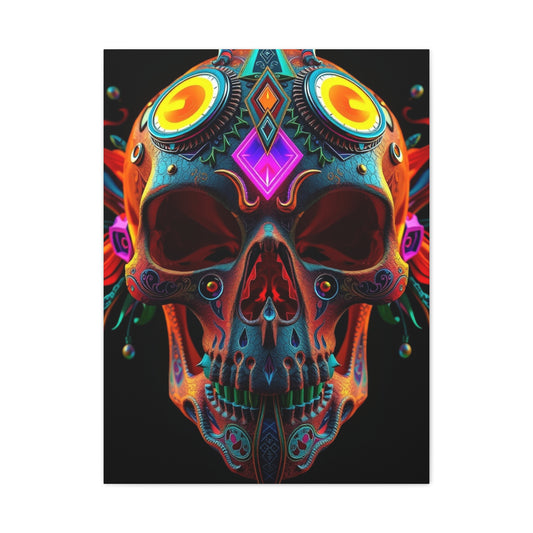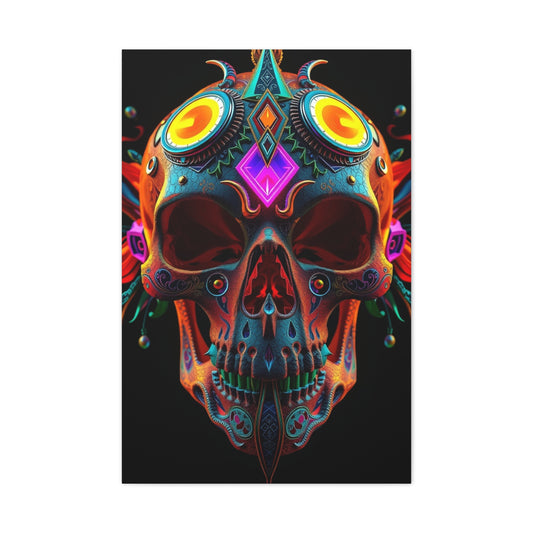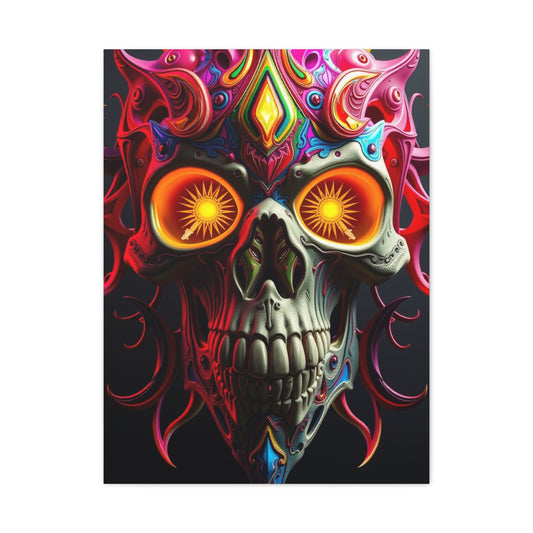The kitchen is the heart of any home, and its design significantly influences both the aesthetics and functionality of the space. Contemporary kitchen cabinets are central to this transformation, offering a blend of minimalist design, functionality, and long-lasting style. Unlike traditional cabinetry, contemporary cabinets focus on sleek lines, subtle colors, and innovative materials that complement modern living while staying relevant over time.
A key feature of contemporary kitchen cabinets is their emphasis on clean, uncluttered aesthetics. Minimalist design principles favor smooth surfaces, simple geometric shapes, and subtle textures. These characteristics ensure the cabinetry feels light and open, contributing to an overall sense of spaciousness in the kitchen. The visual simplicity of contemporary cabinets allows homeowners to focus on the quality of materials and the craftsmanship involved, making every element of the kitchen feel intentional and well-thought-out.
Color palettes for contemporary cabinets often lean toward neutral or muted tones, including shades of white, gray, taupe, and soft pastels. These colors create a calm, serene environment that balances other design elements in the kitchen, such as countertops, backsplashes, and flooring. However, contemporary design is not limited to subtle hues alone. Bold accents and bright colors can also be integrated through cabinet finishes or hardware choices, creating dynamic visual contrasts that energize the space without overwhelming it.
Wood remains a popular choice in contemporary kitchens, providing warmth and texture that soften the sleek, modern lines. Whether it is oak, walnut, maple, or bamboo, wooden cabinetry brings an organic touch to contemporary interiors. Pairing wooden cabinets with minimalistic handles or invisible pull systems enhances the modern aesthetic while retaining the natural charm of the wood. Wooden laminate finishes are particularly versatile, combining the beauty of natural wood with the durability and low maintenance that modern kitchens demand.
In addition to visual appeal, contemporary kitchen cabinets prioritize functionality. Modular designs allow homeowners to maximize storage and improve organization, with clever solutions for optimizing space in even the smallest kitchens. Features such as pull-out shelves, soft-close drawers, corner carousels, and built-in organizers enhance usability and reduce clutter. This combination of practical design and refined aesthetics ensures that the kitchen remains efficient and enjoyable to use.
Hardware selection plays a pivotal role in the contemporary cabinet experience. Modern pulls and handles often feature sleek metal finishes such as brushed nickel, matte black, or polished chrome. These accents complement the clean lines of the cabinetry while adding a touch of sophistication. In some designs, the absence of external handles—through push-to-open or integrated pull systems—creates a seamless, uninterrupted surface that reinforces the minimalist philosophy of contemporary design.
The interplay of light is another essential consideration for contemporary kitchens. Cabinets with glossy or reflective finishes can enhance natural light, making the space appear larger and more inviting. Conversely, matte finishes offer a subtle, understated elegance, reducing glare and emphasizing texture. Strategic lighting under cabinets or within display units further highlights the design features and adds depth to the kitchen environment.
Beyond individual aesthetics, contemporary kitchen cabinets are designed to work harmoniously with other elements in the space. The backsplash, countertops, flooring, and appliances are all part of a cohesive design narrative. A white brick backsplash, for example, can add texture without overwhelming the cabinetry, while metallic accents on cabinets can echo appliance finishes for a coordinated look. Pastel-colored cabinets can brighten the space while maintaining a soft, contemporary charm.
Modularity is a defining feature of contemporary cabinetry. Full-height units, wall-mounted cabinets, and open shelving provide flexible options for storage, display, and accessibility. Large cabinets utilize vertical space efficiently, offering concealed storage for kitchen essentials, while glass-fronted units showcase select items and introduce visual variety. The modular approach allows kitchens to evolve, adapting to changing family needs or design preferences without requiring a complete overhaul.
Another aspect of contemporary design is the focus on sustainability and eco-friendly materials. Many modern cabinets use responsibly sourced wood, low-VOC paints, and environmentally conscious laminates. These choices ensure that kitchens are not only beautiful and functional but also align with broader values of sustainability and health-conscious living.
Innovations in cabinet construction and materials have expanded the possibilities for contemporary kitchens. High-quality laminates, thermofoil finishes, and engineered wood provide durability while allowing for a wide range of textures and colors. Custom finishes enable homeowners to achieve unique looks, from matte neutral tones to glossy bold colors, without sacrificing practicality. The combination of innovative materials and precise craftsmanship ensures that contemporary cabinets remain resilient in daily use.
Contemporary kitchen cabinets are not defined by a single style but rather by an approach that emphasizes simplicity, functionality, and a refined aesthetic. Understanding the different styles and finishes available can help homeowners design kitchens that are both practical and visually appealing. In contemporary design, the focus is often on clean lines, modular arrangements, and thoughtful integration of textures and colors.
One popular approach is the flat-panel or slab-style cabinet, characterized by smooth, unadorned surfaces and minimal detailing. This style epitomizes modern minimalism, avoiding unnecessary ornamentation while creating a sense of spaciousness and visual clarity. Slab cabinets work particularly well in open-plan kitchens, where uninterrupted surfaces help maintain a cohesive flow between the kitchen, dining, and living areas. Their simplicity makes them highly adaptable, allowing for bold accent colors, high-gloss finishes, or subtle matte tones to shine without conflict.
Another contemporary style gaining attention is the shaker-inspired cabinet, which combines clean lines with a subtle frame around the door panel. While slightly more traditional than slab cabinets, modern shaker cabinets are adapted with sleeker proportions, narrow frames, and muted finishes. They strike a balance between classic warmth and contemporary elegance, making them suitable for homeowners who desire a timeless yet current kitchen aesthetic. Shaker-style cabinets also work well with natural wood finishes, soft pastel tones, or a monochromatic color palette to maintain a refined and modern feel.
Glass-fronted cabinets are another versatile option in contemporary kitchens. Incorporating glass doors into upper cabinets or display units allows for a sense of openness while providing a platform to showcase select dishware, glassware, or decorative items. Frosted or textured glass adds privacy while still reflecting light, contributing to an airy and expansive kitchen environment. Clear glass doors, meanwhile, invite the use of accent lighting inside cabinets, highlighting carefully curated kitchen items and elevating the overall design.
When it comes to cabinet finishes, contemporary kitchens embrace a wide variety of options. High-gloss finishes are popular for their reflective qualities, which enhance natural light and create a sleek, modern look. These finishes are ideal for smaller kitchens, as the reflective surfaces can make spaces feel larger and brighter. Matte finishes, in contrast, offer understated elegance and reduce glare, emphasizing the depth and texture of the cabinetry. Matte finishes are often paired with natural wood, soft pastels, or muted neutral tones to achieve a warm yet contemporary ambiance.
Laminate and thermofoil finishes are increasingly favored for contemporary kitchen cabinets due to their versatility, durability, and affordability. Laminate finishes can mimic the look of natural wood, stone, or metallic textures while offering easy maintenance and resistance to scratches and moisture. Thermofoil coatings create seamless, uniform surfaces that resist stains and are easy to clean, making them practical for busy kitchens. These finishes provide homeowners with numerous options for achieving a specific style without compromising on longevity or functionality.
Hardware also plays a critical role in defining the contemporary cabinet look. Sleek metallic handles, including brushed nickel, matte black, and polished chrome, complement minimalist designs while adding a touch of sophistication. Alternatively, integrated or recessed handles allow for completely smooth cabinet fronts, creating a seamless, modern appearance. Push-to-open mechanisms have gained popularity in contemporary kitchens, particularly in high-gloss or slab-style cabinets, eliminating the need for visible hardware while maintaining ease of use.
Color choices in contemporary cabinetry extend beyond neutral shades. While whites, grays, and beiges remain foundational for creating calm, balanced kitchens, bold color blocks are increasingly embraced in modern designs. Bright red, deep navy, emerald green, or mustard yellow cabinets can act as focal points within a neutral kitchen, injecting personality without overwhelming the space. Pastel tones are also trending, providing a softer pop of color that maintains a light and airy feel. The careful selection of cabinet colors helps achieve harmony between bold statements and understated elegance.
Metallic accents in contemporary kitchen cabinets are another way to introduce a modern flair. Handles, pulls, or trim elements in metals such as brass, stainless steel, or copper can transform the overall look. Metallic finishes not only add shine and sophistication but also provide contrast against matte or muted cabinet surfaces. These accents are particularly effective when coordinated with kitchen appliances, lighting fixtures, and faucets, creating a unified design language throughout the space.
Storage solutions in contemporary kitchens are designed to maximize usability while maintaining clean lines. Full-height cabinets allow homeowners to utilize vertical space efficiently, providing ample storage for pantry items, cookware, and small appliances. Corner cabinets with rotating carousels or pull-out shelving eliminate wasted space while improving accessibility. Soft-close hinges and drawers enhance the tactile experience, preventing slamming and adding a sense of refinement to daily kitchen interactions.
Open shelving is another element commonly integrated into contemporary kitchens. Open shelves provide opportunities to display curated dishware, decorative objects, or plants, adding visual interest and a personal touch. They work especially well when combined with minimalist cabinet designs, creating a balance between closed storage and open display. Proper lighting above or below open shelves enhances their appeal, highlighting textures and finishes while emphasizing the kitchen’s modern aesthetic.
The integration of modular design principles is fundamental in contemporary cabinetry. Modular cabinets are manufactured in standardized units, making them easy to configure in a variety of layouts. This flexibility allows homeowners to tailor their kitchen to specific functional needs and available space. Modular designs also make renovations or future expansions more straightforward, as additional units can be incorporated without disrupting the existing kitchen layout.
Sustainability and eco-conscious choices are increasingly significant in contemporary kitchen design. Environmentally responsible materials, such as sustainably sourced wood, low-VOC paints, and recycled laminates, are not only better for the environment but also improve indoor air quality. The focus on sustainability extends to energy-efficient lighting integrated into cabinets, such as LED strips beneath upper units or inside glass-fronted displays. These environmentally mindful choices harmonize with the modern ethos of practical, thoughtful design.
Beyond functionality and materials, contemporary kitchen cabinets contribute to the overall atmosphere of the home. Their clean lines, thoughtful finishes, and cohesive color palettes influence the kitchen’s sense of space, light, and flow. By carefully combining elements such as slab or shaker styles, metallic accents, glass panels, and innovative storage solutions, homeowners can achieve a kitchen that is not only aesthetically pleasing but also highly practical.
Designing a contemporary kitchen involves more than selecting cabinets—it requires thoughtful planning of layout, lighting, and ergonomics to create a space that is both functional and visually appealing. Contemporary kitchen cabinets are versatile enough to adapt to a wide range of layouts, from compact urban kitchens to spacious open-plan designs. Understanding how these elements work together ensures a kitchen that supports daily activities while maintaining a sleek, modern aesthetic.
Kitchen Layouts and Cabinet Placement
The layout of a kitchen significantly influences how cabinets are designed and arranged. Contemporary kitchens typically follow one of several standard layouts, including L-shaped, U-shaped, galley, or island configurations. Each layout presents unique opportunities for maximizing cabinet space and enhancing workflow. For instance, L-shaped kitchens often benefit from full-height corner cabinets that efficiently use vertical space while providing ample storage. U-shaped kitchens can incorporate both upper and lower cabinets along three walls, creating continuous storage and work surfaces. In island kitchens, freestanding or peninsula cabinets allow for additional storage without compromising the open feel of the space. Proper layout planning ensures that cabinet placement aligns with the “work triangle” principle, minimizing the distance between the sink, stove, and refrigerator for efficiency.
Optimizing Storage Solutions
Storage is a critical consideration in contemporary kitchen design. Beyond traditional shelves, modern cabinets include innovative storage solutions that enhance usability. Pull-out drawers, pantry cabinets with adjustable shelves, and rotating corner carousels help maximize every inch of space while keeping items easily accessible. Deep drawers are ideal for storing pots, pans, and other large kitchen essentials, while vertical dividers can organize baking sheets and cutting boards. Open shelving or glass-fronted cabinets provide display opportunities without compromising storage capacity. By combining functional storage features with contemporary design elements, homeowners can maintain a clutter-free kitchen that feels spacious and well-organized.
Lighting Integration in Cabinet Design
Lighting is a vital aspect of contemporary kitchens, not only for functionality but also for highlighting cabinet features and creating ambiance. Integrated lighting options, such as under-cabinet LED strips, illuminate countertops for meal preparation while enhancing the overall aesthetic. Interior cabinet lighting, especially in glass-fronted units, showcases dishware and decorative items, adding depth and visual interest. Recessed lighting within cabinets can highlight textures, colors, and metallic accents, enhancing the sleek modern look. Additionally, reflective surfaces like glossy cabinet finishes amplify natural light, making kitchens appear brighter and more inviting. Strategic lighting integration ensures that contemporary kitchen cabinets are both practical and visually striking.
Ergonomics and Accessibility
Ergonomics plays a crucial role in contemporary kitchen design. Cabinets should be designed and installed at heights and depths that facilitate comfortable access to frequently used items. Upper cabinets positioned too high or deep can make retrieval difficult, while lower cabinets should accommodate bending or reaching without strain. Pull-out drawers and sliding shelves improve accessibility, allowing easy reach for utensils, pots, and pantry items. Soft-close hinges and drawers enhance usability, reducing noise and effort while adding a sense of refinement. Thoughtful attention to ergonomics ensures that a contemporary kitchen is comfortable and efficient for all users, whether in a small apartment or a large family home.
Materials and Textures in Contemporary Layouts
The choice of materials and textures for cabinets impacts both the visual and functional aspects of contemporary kitchens. Wood, laminate, and engineered wood are common choices, each offering distinct characteristics. Wood provides warmth and natural texture, creating a welcoming atmosphere, while laminate offers a variety of colors, patterns, and finishes for a sleek, modern look. Engineered wood is durable and stable, ideal for consistent performance in busy kitchens. Mixing textures, such as pairing matte cabinetry with glossy accents or metallic hardware, can add depth and sophistication to the design. By carefully selecting materials, homeowners can ensure that their contemporary cabinets are not only visually appealing but also resilient and long-lasting.
Color and Contrast Strategies
Color plays a central role in contemporary kitchen design, influencing mood, spatial perception, and overall harmony. Neutral tones like white, gray, or beige provide a calm and cohesive backdrop, allowing other elements like countertops, backsplash, or appliances to stand out. Bold color accents, such as deep navy, emerald green, or vibrant red, can be strategically incorporated into select cabinets or panels to create focal points. Pastel hues offer subtle variation while maintaining a light, airy feel. Contemporary design often emphasizes contrast, such as pairing dark lower cabinets with light upper units or combining matte and glossy finishes to create visual interest. Thoughtful color strategies contribute to a kitchen that feels balanced, modern, and inviting.
Cabinet Accessories and Functional Enhancements
Modern cabinets are not just storage units—they can include a range of functional enhancements to streamline kitchen activities. Pull-out spice racks, built-in trash and recycling bins, and integrated wine racks are examples of how contemporary design combines practicality with style. Interior organizers, dividers, and adjustable shelving improve efficiency and prevent clutter, ensuring that every item has a dedicated place. Even small details like soft-close hinges, concealed handles, and magnetic catches contribute to a sense of seamless design while enhancing day-to-day usability. By integrating these functional features, contemporary kitchen cabinets elevate both convenience and aesthetic appeal.
The Role of Minimalism and Seamless Design
Minimalism is a cornerstone of contemporary cabinetry. Cabinets with flat panels, integrated handles, and uniform finishes create a clean, uninterrupted visual flow. Minimalist design reduces visual clutter, allowing the focus to remain on quality materials, textures, and color palettes. Seamless cabinetry enhances the perception of space and can be particularly effective in small kitchens or open-plan layouts. Concealed appliances and built-in storage solutions further support this minimalist approach, ensuring that the kitchen remains visually streamlined while remaining highly functional.
Balancing Open and Closed Storage
Contemporary kitchens often feature a mix of open and closed storage to achieve both practicality and aesthetic balance. Closed cabinets provide concealed storage for everyday items, maintaining a tidy and uncluttered appearance. Open shelving or glass-fronted cabinets allow for decorative displays, creating visual interest and personal expression. Balancing these two storage types ensures that the kitchen is both functional and visually engaging. Open storage also encourages organization and thoughtful arrangement of items, reinforcing the contemporary emphasis on simplicity and order.
Integrating Technology and Smart Solutions
Modern contemporary kitchens increasingly incorporate technology into cabinetry design. Built-in charging stations, LED lighting with dimming options, and soft-close mechanisms are just a few examples of features that enhance usability. Some cabinets also integrate smart storage solutions, such as pull-out pantry units with automated mechanisms or modular inserts that adapt to changing storage needs. These technological integrations support a kitchen that is efficient, comfortable, and in tune with contemporary lifestyles, allowing homeowners to manage tasks more effectively while maintaining a clean and modern aesthetic.
Durability and Maintenance Considerations
Contemporary kitchen cabinets are designed to combine elegance with practicality, and material choice plays a significant role in durability and maintenance. Laminates, engineered wood, and high-quality paints are resistant to moisture, stains, and scratches, ensuring longevity even in busy kitchens. Glossy finishes are easy to wipe clean, while matte surfaces can hide minor imperfections and fingerprints. Hardware such as stainless steel or coated metals resists corrosion and maintains a polished appearance over time. Selecting durable materials and finishes ensures that contemporary cabinets retain their beauty and functionality for years to come.
The Impact of Cabinet Design on Overall Kitchen Aesthetics
Cabinets form the backbone of any kitchen, influencing its overall aesthetic, ambiance, and feel. Contemporary kitchen cabinets with clean lines, thoughtful proportions, and coordinated colors create a harmonious environment. When paired with complementary countertops, backsplashes, and flooring, cabinets help establish a cohesive design language throughout the space. Lighting, materials, hardware, and layout choices all contribute to how the cabinetry is perceived, impacting not only the visual appeal but also the user experience. Well-designed contemporary cabinets are more than functional—they set the tone for the entire kitchen environment.
Contemporary kitchen cabinets are a reflection of both functional needs and modern design trends. Over the years, their evolution has been shaped by innovations in materials, finishes, and storage solutions, as well as by changing lifestyles and aesthetic preferences. Today’s contemporary cabinets are not only storage units but also design statements that define the overall character of the kitchen. Understanding current trends, material innovations, and ways to personalize cabinetry can help homeowners create kitchens that are practical, stylish, and enduring.
Current Trends in Contemporary Kitchen Cabinets
One of the most notable trends in contemporary cabinetry is the blending of functionality with minimalist aesthetics. Homeowners increasingly favor cabinets with flat panels, clean lines, and subtle hardware, creating a sleek, uncluttered appearance. This approach supports the modern desire for organized, visually calm spaces. Open shelving, integrated handles, and push-to-open systems are also common, as they maintain the seamless look while providing accessible and practical storage. These trends highlight a shift away from ornate or heavily detailed cabinetry toward simplicity, adaptability, and elegance.
Another significant trend is the use of mixed materials and finishes. Contemporary kitchens often feature a combination of wood, laminate, glass, and metallic elements within the same design. For example, lower cabinets might be finished in natural wood for warmth, while upper cabinets are high-gloss white to reflect light and create contrast. Metallic accents, such as brass or stainless-steel handles, provide visual interest and a modern touch. This layering of textures and materials enhances depth, sophistication, and the overall visual impact of the cabinetry.
Color trends in contemporary cabinetry continue to evolve. Neutral shades remain foundational, but bold and unconventional hues are gaining popularity. Deep navy, forest green, charcoal gray, and even matte black are used to create dramatic statements in otherwise minimalist kitchens. Pastel tones, such as soft pink, mint, or powder blue, offer a subtle pop of color that complements neutral surroundings without overwhelming the space. These trends demonstrate how contemporary kitchen cabinets can be both versatile and expressive, accommodating a range of personal styles and moods.
Innovations in Materials and Construction
Modern kitchen cabinets benefit from advances in materials and construction techniques. Engineered wood, high-quality laminates, and thermofoil finishes have become standard, offering durability, moisture resistance, and low maintenance. Engineered wood provides structural stability, while laminates and thermofoil coatings allow for diverse textures, colors, and patterns, from matte neutrals to glossy bolds. These materials are particularly suited to contemporary kitchens, where smooth surfaces, seamless finishes, and precision craftsmanship are highly valued.
Sustainable materials are another focus in contemporary cabinet design. Many manufacturers now offer responsibly sourced wood, recycled composites, and low-VOC finishes. These options reflect a growing awareness of environmental impact and the desire to create healthier living spaces. Sustainability in kitchen cabinetry also extends to long-lasting finishes and durable hardware, ensuring that kitchens remain functional and visually appealing for many years without frequent replacements.
Cabinet Organization and Customization
Contemporary kitchen cabinets are increasingly designed with advanced organizational features. Pull-out drawers, modular inserts, lazy Susans, vertical dividers, and built-in racks maximize storage efficiency and accessibility. These features allow homeowners to customize the interior of each cabinet based on their specific needs, whether for storing cookware, pantry items, or utensils. Adjustable shelving and modular components ensure flexibility, enabling the kitchen to adapt as household requirements change. Effective organization not only improves functionality but also enhances the sleek, uncluttered appearance that defines contemporary kitchens.
Customization is key to achieving a personal touch in contemporary cabinetry. Homeowners can select door styles, finishes, hardware, and internal layouts that reflect their tastes while aligning with modern design principles. Glass-fronted cabinets or open shelving can highlight decorative items or everyday essentials, adding personality to the space. The careful coordination of colors, textures, and proportions ensures that the cabinets complement other kitchen elements such as countertops, backsplashes, flooring, and appliances. Personalized cabinetry allows the kitchen to function as both a practical workspace and an expression of individual style.
Lighting and Visual Enhancement
Lighting plays a vital role in accentuating contemporary kitchen cabinets. Integrated lighting solutions, such as LED strips beneath upper cabinets, interior glass-front cabinet illumination, or recessed spotlights, enhance visibility and highlight the beauty of the cabinetry. Properly placed lighting not only improves functionality but also adds depth, warmth, and visual interest. Reflective surfaces, high-gloss finishes, and metallic accents interact with light, creating dynamic effects that transform the kitchen atmosphere. In contemporary design, lighting is as much a design tool as a functional necessity, influencing how cabinets and overall spaces are perceived.
Ergonomics and Functional Comfort
Ergonomics remains a crucial consideration in contemporary cabinet design. Cabinets should be positioned for ease of access, with upper and lower units accommodating a range of activities without strain. Pull-out drawers and sliding shelves reduce bending and reaching, while soft-close hinges and drawers prevent abrupt slamming, enhancing comfort. The integration of countertop heights, appliance placement, and cabinet depth into the design process ensures a kitchen that supports efficient workflows. By prioritizing ergonomic principles, contemporary cabinets make daily cooking, cleaning, and storage tasks more convenient and enjoyable.
Innovative Storage Solutions
In addition to conventional storage, contemporary kitchens incorporate innovative solutions to maximize space and usability. Hidden compartments, pull-out pantry units, appliance garages, and built-in recycling stations optimize kitchen efficiency without disrupting the clean lines of cabinetry. Drawer organizers, utensil trays, and modular inserts maintain order and prevent clutter, keeping essentials within easy reach. Corner solutions, such as rotating carousels or pull-out shelves, make previously hard-to-reach spaces accessible and practical. These innovations reflect a broader trend in contemporary design: integrating intelligent storage while preserving simplicity and elegance.
Finishing Touches and Decorative Accents
Contemporary kitchen cabinets often feature subtle decorative accents that enhance overall design without detracting from minimalism. Metallic trim, contrasting textures, and integrated lighting create focal points within a streamlined layout. Glass panels, textured laminates, or patterned finishes add visual interest and depth. While minimalism emphasizes restraint, small touches like sleek handles, coordinated hardware, and consistent color schemes ensure that the cabinetry maintains a refined and cohesive appearance. These finishing details demonstrate how contemporary design balances functionality with aesthetic appeal.
Personalization and Adaptability
One of the hallmarks of contemporary kitchen cabinets is their adaptability. Cabinets can be tailored to suit individual lifestyles, family needs, and personal preferences. For instance, a home cook may prioritize deep drawers and pull-out shelving for cookware, while someone who entertains frequently might focus on display cabinets and open shelving. Modular designs allow homeowners to reconfigure storage units over time, ensuring that the kitchen evolves with changing requirements. Personalization enhances both utility and satisfaction, resulting in a kitchen that is uniquely suited to its users.
Future Directions in Contemporary Cabinetry
Looking ahead, contemporary kitchen cabinets are likely to continue embracing innovation and sustainability. Smart storage solutions, integrated lighting systems, and touchless hardware may become standard features. New materials that combine durability with aesthetic appeal will expand design possibilities, while environmentally conscious choices will play an increasingly important role. Cabinets will not only serve as storage and workspace but also as interactive elements that enhance convenience, efficiency, and overall kitchen experience. The ongoing evolution of contemporary cabinetry reflects broader trends in modern living, where design, technology, and sustainability converge.
Contemporary kitchen cabinets are central to creating kitchens that are stylish, functional, and adaptable. Current trends emphasize minimalism, clean lines, versatile storage, and mixed materials, allowing homeowners to achieve a modern aesthetic that remains timeless. Innovations in materials, construction, and ergonomic design enhance both durability and usability, while integrated lighting and finishing touches highlight the beauty and functionality of the cabinetry. Personalization ensures that each kitchen reflects the tastes and needs of its users, making contemporary cabinets an essential element of modern home design.
From modular layouts and innovative storage solutions to advanced finishes and lighting integration, contemporary kitchen cabinets combine form and function in a harmonious balance. They transform kitchens into organized, efficient, and visually striking spaces, reflecting both modern design principles and the lifestyles of the people who use them. By considering trends, innovations, and personalization options, homeowners can create kitchens that are not only practical and enduring but also expressive of their individual style and vision. In essence, contemporary kitchen cabinets are more than functional elements—they are the cornerstone of modern kitchen design, shaping both the utility and the aesthetic of one of the most important spaces in the home.
Contemporary kitchen cabinets are a defining element of modern kitchens, combining functionality, style, and durability in one cohesive package. While trends and aesthetics are important, long-term satisfaction with cabinetry depends equally on material selection, practical planning, and attention to design details. This part focuses on actionable insights, material considerations, and design strategies that ensure contemporary cabinets are both visually appealing and functional for years to come.
Choosing the Right Materials for Longevity
Material selection is fundamental to the durability and appearance of contemporary kitchen cabinets. Engineered wood is a popular choice due to its stability, resistance to warping, and adaptability to various finishes. High-quality plywood and medium-density fiberboard (MDF) are frequently used for cabinet bodies and doors because they offer a consistent surface for laminates, paints, and veneers. Natural wood remains a timeless option, particularly for those seeking warmth and texture, but it requires careful maintenance to prevent moisture damage. Laminates and thermofoil finishes provide low-maintenance alternatives that can mimic wood or metal, offering aesthetic flexibility without compromising durability.
Metallic finishes on handles, pulls, and trims also impact longevity. Stainless steel, brass, and aluminum are durable and resistant to corrosion, providing lasting appeal in high-use kitchens. Similarly, glass panels, whether clear, frosted, or textured, should be tempered for safety and long-term performance. Selecting the right materials from the outset ensures that contemporary cabinets maintain their appearance and functionality over time, reducing the need for frequent replacements or repairs.
Prioritizing Functionality in Cabinet Design
Beyond aesthetics, contemporary kitchen cabinets must serve functional purposes efficiently. Storage solutions such as pull-out drawers, sliding shelves, and rotating corner carousels maximize accessibility and organization. Deep drawers accommodate larger cookware and small appliances, while modular inserts can be customized for utensils, spices, or pantry items. Open shelving and glass-fronted units offer display opportunities while complementing practical storage. Thoughtful organization ensures that every item has a dedicated place, supporting a clutter-free and efficient kitchen environment.
Integration of appliances into cabinetry is another aspect of functionality. Built-in ovens, microwaves, and refrigerators can be seamlessly incorporated into cabinet layouts, maintaining clean lines and enhancing the modern aesthetic. This approach also improves workflow, allowing tasks such as cooking, prepping, and cleaning to be performed with minimal movement and effort. Designing cabinets around the placement of appliances ensures that contemporary kitchens are both practical and visually coherent.
Optimizing Space Through Modular Design
Modular kitchen cabinets are highly adaptable, making them ideal for contemporary designs. Standardized units can be combined in various configurations to fit kitchens of all shapes and sizes. Wall-mounted cabinets, base cabinets, and full-height pantry units allow homeowners to fully utilize vertical space, while islands or peninsulas provide additional storage and workspace. Modular components can be rearranged or expanded as needs evolve, offering long-term flexibility. This adaptability is particularly valuable in open-plan kitchens, where maximizing storage without compromising the sense of space is essential.
Color Strategies for Contemporary Kitchens
Color selection plays a crucial role in shaping the overall feel of contemporary kitchen cabinets. Neutral shades like white, gray, and beige are timeless choices, creating a calm and versatile backdrop. Bold colors, such as deep blue, charcoal, emerald, or even vibrant red, can act as focal points and create visual contrast. Pastels, such as soft mint, blush, or powder blue, bring a light, airy feel to kitchens while maintaining subtlety. Combining contrasting tones—such as light upper cabinets with darker lower units—adds depth and balance. Thoughtful color strategies enhance visual harmony and allow contemporary kitchens to remain stylish and inviting over time.
Lighting Considerations for Cabinets
Integrated lighting is a vital aspect of contemporary kitchen design. Under-cabinet LED strips illuminate work surfaces, making cooking and preparation tasks safer and more efficient. Interior cabinet lighting enhances the display of items in glass-fronted units, adding depth and highlighting textures. Recessed or accent lighting above cabinets can draw attention to design features, metallic accents, or unique finishes. Proper lighting not only improves functionality but also emphasizes the visual appeal of cabinets, enhancing the overall ambiance of the kitchen. In contemporary kitchens, lighting is both a practical necessity and a design element that elevates aesthetics.
Ergonomic Principles in Cabinet Design
Ergonomics ensures that contemporary kitchen cabinets support comfortable and efficient use. Proper placement of upper and lower cabinets minimizes bending and reaching, while soft-close drawers and doors reduce strain and noise. Pull-out shelves, sliding units, and adjustable shelving enhance accessibility, particularly in deeper or corner cabinets. Ergonomic design also considers the height and spacing of countertop work surfaces, ensuring that food preparation, cooking, and cleaning can be performed efficiently. Integrating ergonomic principles into cabinet planning improves daily usability while reinforcing the streamlined, modern appeal of contemporary kitchens.
Incorporating Storage Innovations
Contemporary kitchens are increasingly equipped with innovative storage solutions that combine practicality with aesthetics. Hidden compartments, pull-out pantry units, and appliance garages keep essential items organized without disrupting the visual flow. Drawer dividers, spice racks, and utensil inserts maintain order and maximize usable space. Corner solutions, such as rotating carousels or diagonal pull-outs, optimize previously inaccessible areas. These storage innovations enhance functionality while maintaining the sleek, uncluttered look that defines contemporary cabinet design.
Maintaining a Minimalist Aesthetic
Minimalism is a core principle of contemporary kitchen design. Flat-panel cabinet doors, integrated or recessed handles, and uniform finishes contribute to a seamless, uncluttered appearance. Concealed storage for everyday items, combined with selective open shelving or glass-fronted cabinets, balances functionality with visual interest. Minimalist principles prioritize simplicity and clarity, allowing the quality of materials, hardware, and craftsmanship to stand out. Maintaining this aesthetic ensures that kitchens remain elegant, timeless, and adaptable to evolving design trends.
Metallic and Glass Accents
Incorporating metallic and glass accents can elevate contemporary cabinet designs. Brushed, polished, or matte metals on handles, pulls, and trim elements create sophistication and contrast with cabinet finishes. Glass panels—clear, frosted, or textured—introduce transparency and light, enhancing openness while highlighting displayed items. These elements add subtle decorative touches without compromising the minimalist foundation of contemporary design. Proper integration of metallic and glass accents reinforces the balance between functionality and visual appeal.
Sustainability and Environmentally Conscious Design
Sustainability is increasingly prioritized in contemporary cabinetry. Using responsibly sourced wood, recycled composites, and low-VOC finishes supports environmental responsibility while maintaining healthy indoor air quality. Durable materials, long-lasting hardware, and finishes reduce the need for frequent replacements, minimizing waste. Energy-efficient integrated lighting and appliances complement eco-conscious cabinetry, contributing to a sustainable, modern kitchen. Incorporating environmentally conscious practices ensures that contemporary cabinets meet both aesthetic and ethical standards.
Personalization and Tailored Solutions
Contemporary cabinets are highly adaptable, allowing for personalization that aligns with individual lifestyles and preferences. Homeowners can choose finishes, hardware, storage configurations, and color schemes to suit their needs and tastes. Open shelves or glass-front units can highlight collectibles or dishware, adding personality while maintaining functionality. Modular components allow kitchens to evolve, providing long-term flexibility. Personalized cabinetry ensures that contemporary kitchens are not only stylish but also uniquely functional, reflecting the character of the household.
Finishing Touches and Coordination
Attention to detail in finishing touches is essential for cohesive contemporary kitchens. Coordinating cabinet finishes with countertops, backsplashes, and flooring ensures visual harmony. Metallic accents, contrasting textures, and subtle lighting create focal points and enhance the overall aesthetic. Seamless integration of appliances and thoughtful placement of storage elements maintain clean lines and reduce clutter. Finishing touches reinforce the modern look of cabinetry while contributing to a highly functional, visually appealing kitchen environment.
Long-Term Design Considerations
When planning contemporary kitchen cabinets, long-term considerations are critical. Choosing durable materials, adaptable storage solutions, and finishes that can withstand wear ensures that cabinets remain functional and stylish over time. Modular designs allow for future modifications, while ergonomic principles support comfortable use throughout daily activities. Thoughtful color schemes, lighting, and accents contribute to a timeless aesthetic that accommodates evolving trends and personal preferences. Planning with longevity in mind enhances the overall value, usability, and enjoyment of the kitchen.
Contemporary kitchen cabinets have evolved far beyond their original role as simple storage units. Today, they are a fusion of style, functionality, and technology, designed to meet the needs of modern living. They combine sleek aesthetics, innovative storage solutions, ergonomic design, and cutting-edge materials to create kitchens that are practical, visually appealing, and adaptable. Understanding the latest trends, technology integration, and strategies to future-proof cabinetry can help homeowners design kitchens that remain functional and stylish for years to come.
Smart Integration in Contemporary Cabinets
One of the most significant trends in modern cabinetry is the integration of smart technology. Smart cabinets include features such as automated lighting, motion-sensor drawers, and touchless opening systems. These innovations improve convenience and accessibility while enhancing the kitchen’s modern aesthetic. For example, LED lighting inside cabinets can automatically illuminate when a door is opened, providing visibility for items stored deep within shelves. Motion-activated pull-out drawers and soft-close mechanisms reduce wear and tear and enhance usability, ensuring smooth, effortless operation.
Technology integration also extends to appliances and organization. Some contemporary cabinet systems now include charging stations for mobile devices, built-in controls for smart appliances, and modular units that can adapt to future technological upgrades. Smart storage solutions allow homeowners to optimize kitchen efficiency, whether by automating pantry organization or integrating hidden compartments for small appliances and utensils. These advancements illustrate how contemporary cabinets serve as both functional storage and high-tech solutions for modern kitchens.
Maximizing Kitchen Efficiency Through Layout and Design
Efficiency is a cornerstone of contemporary kitchen cabinetry. Thoughtful layout planning ensures that the kitchen workflow is streamlined, with easy access to frequently used items and appliances. Common layouts, such as L-shaped, U-shaped, galley, and island kitchens, provide opportunities to optimize cabinet placement. Full-height cabinets make use of vertical space, while modular units allow flexibility in storage and appliance integration. Corner cabinets with rotating carousels or pull-out shelves minimize wasted space, enhancing usability without disrupting the clean lines typical of contemporary design.
Work triangle principles, which position the sink, stove, and refrigerator in a functional arrangement, remain relevant in contemporary kitchens. Cabinets are designed to complement this workflow, ensuring that storage for cooking tools, utensils, and pantry items is strategically located. Adjustable shelving and modular inserts further support efficiency, allowing homeowners to adapt storage spaces as their needs evolve. The combination of thoughtful layout and functional cabinetry maximizes both convenience and aesthetic appeal.
Material Innovation and Sustainable Practices
Modern contemporary cabinets employ advanced materials that combine durability, visual appeal, and environmental responsibility. Engineered wood, plywood, MDF, laminates, and thermofoil coatings offer versatility in texture, color, and finish while ensuring resilience in everyday use. High-gloss finishes reflect light and create a sleek, modern appearance, while matte finishes emphasize texture and understated elegance.
Sustainability has become a major consideration, with cabinets increasingly made from responsibly sourced wood, recycled composites, and low-VOC finishes. Energy-efficient lighting and water-conscious appliances integrated into cabinetry further contribute to environmentally responsible kitchens. Choosing durable, sustainable materials not only ensures long-term functionality but also aligns with broader principles of eco-conscious design, allowing homeowners to enjoy contemporary kitchens without compromising environmental ethics.
Ergonomics and User-Centric Design
Ergonomic principles are central to contemporary cabinet design. Cabinets should be accessible, minimizing bending, reaching, and stretching. Pull-out drawers, sliding shelves, and adjustable shelving systems enhance usability, particularly in deep or high cabinets. Soft-close hinges, push-to-open mechanisms, and integrated handles further reduce strain and improve comfort during daily activities.
The integration of ergonomics into cabinet design extends to countertop heights, appliance placement, and workflow considerations. Properly aligned work surfaces ensure that cooking, prepping, and cleaning tasks can be performed efficiently and comfortably. These design principles are especially important in open-plan kitchens, where cabinetry must blend aesthetics with functional practicality for households of varying sizes and needs.
Lighting as a Design and Functional Element
Lighting plays a crucial dual role in contemporary kitchens, serving both functional and decorative purposes. Under-cabinet lighting improves visibility for food preparation while enhancing ambiance. Interior cabinet lighting in glass-fronted or open shelving units highlights stored items and adds depth to the space. Recessed or accent lighting above cabinets can emphasize textures, metallic finishes, or architectural details.
The interaction of light with cabinet finishes is essential in contemporary design. Glossy surfaces amplify natural light and create a sense of spaciousness, while matte surfaces reduce glare and emphasize texture. Strategically placed lighting can transform the kitchen atmosphere, making contemporary cabinets appear more dynamic, layered, and visually engaging. This approach ensures that aesthetics and functionality are seamlessly combined.
Advanced Storage Solutions
Contemporary kitchen cabinets now incorporate highly innovative storage systems that maximize space utilization and enhance organization. Pull-out pantry units, appliance garages, and hidden compartments conceal items that might otherwise create visual clutter. Drawer organizers, utensil inserts, and vertical dividers optimize accessibility and keep essential items orderly. Corner units often utilize rotating carousels or diagonal pull-out mechanisms to access previously difficult-to-reach spaces.
These solutions not only improve efficiency but also support the minimalist aesthetic central to contemporary design. By integrating functional enhancements seamlessly into cabinetry, homeowners can maintain a clean, organized environment without compromising style or accessibility.
Customization and Personal Expression
Personalization is an integral component of contemporary kitchen cabinetry. Homeowners can select materials, finishes, colors, hardware, and storage layouts to reflect personal style while maintaining modern design principles. Glass-fronted cabinets or open shelving units can display decorative items, cookbooks, or dishware, adding a distinctive personality to the kitchen. Bold accent colors or metallic trims can highlight focal points, while modular components ensure flexibility as household needs evolve.
Customized cabinetry allows kitchens to be tailored to specific routines and lifestyles. Whether emphasizing functional storage, visual balance, or aesthetic contrast, personalization ensures that the kitchen is both practical and reflective of individual taste.
Color and Texture Strategies
The use of color and texture plays a pivotal role in contemporary kitchen cabinets. Neutral shades like white, gray, and beige provide timeless foundations, while bold colors such as navy, emerald, or deep red create dramatic accents. Pastels, such as mint or blush, offer softer, refreshing variations.
Texture contrasts—like pairing glossy lower cabinets with matte upper units or combining wooden elements with metallic hardware—add visual interest without cluttering the design. This balance of color and texture contributes to a cohesive and inviting kitchen atmosphere while highlighting the cabinets’ design features.
Future-Proofing Cabinets for Evolving Needs
Future-proofing contemporary kitchen cabinets involves designing with adaptability and long-term functionality in mind. Modular layouts allow for easy expansion or reconfiguration, accommodating changes in household size, lifestyle, or kitchen technology. Adjustable shelving, sliding units, and interchangeable components ensure that storage systems remain relevant as needs evolve.
Durable materials, high-quality finishes, and thoughtfully designed hardware reduce maintenance requirements and extend the lifespan of cabinetry. By incorporating sustainable practices and ergonomic principles, homeowners can create kitchens that remain functional, stylish, and environmentally responsible for decades.
Integrating Aesthetic Consistency
Contemporary kitchens rely on cohesive design language, with cabinets serving as the anchor for visual consistency. Coordinating cabinet finishes with countertops, backsplashes, flooring, and appliances creates a unified look. Metallic accents, contrasting textures, and subtle lighting enhance focal points and add sophistication without detracting from minimalism.
Maintaining aesthetic consistency involves balancing open and closed storage, selecting harmonious colors, and emphasizing clean lines. When cabinets align with the broader kitchen design, the space appears curated, organized, and inviting, reflecting the principles of contemporary living.
Balancing Form and Function
The hallmark of contemporary kitchen cabinets is their ability to balance form and function. Aesthetics are paramount, but practical usability remains a top priority. Smart storage, ergonomic design, durable materials, integrated lighting, and adaptable layouts combine to create a kitchen that is both visually compelling and highly efficient. This balance ensures that contemporary cabinets support daily activities while maintaining a refined, modern appearance.
Contemporary kitchen cabinets represent the intersection of design, functionality, and technology. Their evolution has been guided by trends emphasizing minimalism, modularity, sustainable materials, and ergonomic principles. Integration of smart technology, advanced lighting, and innovative storage solutions further enhances usability while preserving a sleek, modern aesthetic.
By focusing on material quality, layout efficiency, customization, and future-proofing, homeowners can create kitchens that are not only stylish but also adaptable to changing lifestyles and technological advances. The careful combination of color, texture, hardware, and lighting ensures a visually cohesive and inviting space.
In essence, contemporary kitchen cabinets are more than mere storage—they are the backbone of modern kitchens, shaping workflow, aesthetics, and the overall experience of the home. Thoughtful planning, innovative solutions, and long-term design strategies allow homeowners to enjoy kitchens that are efficient, elegant, and enduringly modern. From the selection of materials and finishes to the integration of smart features and ergonomic design, contemporary cabinets provide a harmonious blend of beauty, practicality, and adaptability, ensuring kitchens remain functional, stylish, and future-ready for years to come.
Contemporary kitchen cabinets have become the cornerstone of modern kitchens, serving not only as storage but also as key design elements that shape functionality, aesthetics, and overall kitchen experience. Beyond basic storage, they now reflect lifestyle choices, technology integration, sustainable practices, and thoughtful design tailored to individual needs. Expanding on previous discussions, this section delves deeper into advanced trends, future-proofing strategies, material innovations, ergonomic solutions, and personalization techniques that define contemporary cabinetry today.
Smart Cabinetry and Technology Integration
One of the defining features of modern contemporary cabinets is the integration of smart technology. Smart cabinetry goes beyond automated lighting and soft-close mechanisms. Motion-activated drawers and doors improve convenience, particularly in high-traffic kitchens, while touchless systems reduce wear and promote hygiene. Advanced kitchens may incorporate pull-out pantry units that track inventory or even notify users when supplies are low. Integrated USB charging ports, smart appliance controls, and embedded sensors for temperature or humidity are becoming increasingly common.
These technological integrations allow cabinets to work harmoniously with other smart kitchen systems, creating an efficient, connected environment. Smart features also support ergonomic use: drawers and shelves that adjust height automatically or lighting that activates with movement make daily tasks seamless. By combining technology with traditional functionality, contemporary cabinets are evolving into interactive and intuitive components of modern kitchens.
Advanced Layout and Workflow Optimization
Optimizing kitchen workflow is critical for both efficiency and comfort. Contemporary cabinets are designed with layout considerations that reduce unnecessary movement. The “work triangle” principle, positioning the sink, stove, and refrigerator for efficient access, remains relevant, but modular cabinetry now allows for greater flexibility in achieving this ideal arrangement.
Full-height cabinets utilize vertical space for storage, while islands and peninsulas incorporate drawers, shelves, and seating to maximize utility. Corner cabinets now feature rotating carousels or pull-out trays to eliminate dead space, while tall pantry units offer pull-down mechanisms for easy access to higher shelves. Every design decision, from cabinet depth to drawer placement, contributes to an optimized workflow, making kitchens more functional and user-friendly.
Material Innovation for Durability and Style
Material choice remains a central aspect of contemporary cabinetry, impacting durability, aesthetics, and maintenance. Engineered woods like MDF and plywood offer stability and versatility, while laminates and thermofoil finishes provide a wide range of textures and colors. High-gloss finishes reflect light and create a sense of spaciousness, whereas matte finishes emphasize subtle textures and understated elegance.
Sustainability is a growing focus, with cabinets increasingly crafted from responsibly sourced wood, recycled composites, and low-VOC finishes. Durable hardware, corrosion-resistant metals, and tempered glass contribute to long-lasting functionality while maintaining modern appeal. Combining aesthetically pleasing materials with high durability ensures that contemporary cabinets remain a long-term investment that continues to perform and impress over the years.
Ergonomics and User-Centric Design
Ergonomics is a critical component of contemporary cabinetry. Cabinets should facilitate ease of use while minimizing physical strain. Adjustable shelves, pull-out drawers, sliding trays, and modular inserts enhance accessibility, even in deeper or taller units. Soft-close hinges and push-to-open mechanisms reduce noise and prevent wear over time.
Ergonomic design also considers countertop height, spacing between cabinets, and appliance placement. A well-planned kitchen allows for efficient workflows, reducing unnecessary movement and making food preparation, cooking, and cleaning tasks easier. Combining ergonomic considerations with a sleek, minimalist aesthetic ensures that contemporary cabinets are both functional and visually balanced.
Lighting as a Design and Functional Element
Lighting is essential in contemporary kitchens for both functional and aesthetic purposes. Integrated under-cabinet lighting illuminates countertops for meal preparation, while interior cabinet lighting showcases glass-fronted or open shelving displays. Accent lighting above or around cabinetry emphasizes textures, metallic finishes, and design features, creating depth and dimension.
Light interacts with cabinet surfaces to enhance their visual impact. Glossy finishes reflect light to make kitchens appear larger and brighter, while matte finishes diffuse light softly, highlighting texture. Thoughtful lighting design transforms cabinetry from a purely functional element into a dynamic feature that defines the room’s ambiance.
Innovative Storage Solutions
Contemporary kitchen cabinets are incorporating increasingly sophisticated storage solutions. Modular pull-out pantry units, hidden compartments, appliance garages, and vertical dividers make it easier to store and access items efficiently. Specialty organizers for spices, utensils, baking trays, and cleaning supplies maximize space utilization while keeping items organized and accessible.
Corner solutions, such as rotating carousels or diagonal pull-out shelves, ensure that previously unused spaces are functional. These innovations support the minimalist aesthetic of contemporary kitchens by hiding clutter and providing dedicated storage for all kitchen essentials, allowing countertops to remain clear and organized.
Personalization and Flexibility
Personalization is a hallmark of contemporary cabinetry. Homeowners can customize cabinet finishes, colors, textures, hardware, and internal layouts to suit their needs and reflect their personal style. Open shelves or glass-fronted cabinets can display collectibles, dishware, or decorative items, adding personality without cluttering the space.
Modular components allow for future flexibility, ensuring that storage solutions evolve as household needs change. This flexibility is particularly valuable in modern kitchens, which often serve multiple purposes, from cooking and dining to socializing and remote work. Personalization ensures that cabinets are both practical and uniquely suited to the household.
Color and Texture Strategies
Color and texture are key elements in contemporary cabinet design. Neutral tones provide a timeless base, while bold colors, such as deep navy, emerald green, or charcoal, create focal points and add depth. Pastel shades like mint, blush, or soft blue can bring a refreshing lightness to kitchens.
Mixing textures—such as pairing matte cabinets with glossy finishes or combining wood and metal—adds visual interest without overwhelming the space. Thoughtful coordination of color and texture ensures a cohesive, sophisticated kitchen design that balances minimalism with personality.
Future-Proofing Contemporary Cabinets
Future-proofing cabinets involves planning for long-term adaptability and functionality. Modular designs allow kitchens to evolve with lifestyle changes, whether that involves adding storage, integrating new appliances, or reconfiguring layouts. High-quality materials, durable finishes, and versatile hardware reduce the need for frequent updates and maintenance.
Sustainability and ergonomic design are also essential for future-proofing. Cabinets that are easy to maintain, energy-efficient, and environmentally responsible remain relevant and practical over time. Considering future technology and potential household changes ensures that contemporary cabinetry continues to perform efficiently while maintaining its aesthetic appeal.
Maintaining Minimalist and Cohesive Design
A minimalist approach remains central to contemporary kitchen cabinets, emphasizing clean lines, flat panels, integrated handles, and uniform finishes. Concealed storage reduces visual clutter, while open or glass-fronted cabinets create focal points for decorative items.
Consistency in finishes, colors, and hardware helps maintain visual harmony throughout the kitchen. By blending functionality with restrained design elements, contemporary cabinets achieve a balance that is both elegant and practical, supporting the overall aesthetics of the home.
Sustainability and Environmental Responsibility
Sustainable practices in cabinet design have become increasingly important. Using eco-friendly materials, recycled composites, and low-VOC finishes minimizes environmental impact while providing healthy indoor air quality. Energy-efficient lighting and water-saving appliances integrated into cabinetry further enhance sustainability. These practices ensure that contemporary kitchens are environmentally responsible while maintaining modern style and long-term usability.
Contemporary kitchen cabinets have transcended their traditional role as mere storage units to become essential design and functional elements in modern homes. They balance aesthetics, usability, and durability, while reflecting individual lifestyles, technological advancements, and sustainability trends. Today’s kitchens are as much about efficiency and innovation as they are about style, and contemporary cabinets are central to this evolution. This expanded section explores advanced trends, smart technology integration, material innovations, ergonomic solutions, aesthetic considerations, and strategies for future-proofing cabinetry.
Smart Cabinets: Convenience Meets Innovation
Technology has transformed how kitchen cabinets function. Smart cabinets now feature automated lighting, touchless opening mechanisms, and motion-sensor drawers that respond to movement, making kitchens more intuitive and convenient. For example, cabinets equipped with motion-sensor lighting illuminate the interior when doors or drawers are opened, providing visibility for stored items, even in deep or dark spaces. Soft-close hinges and drawers prevent slamming, reducing wear and enhancing user comfort.
Smart integration extends to modular pantry systems and appliance storage. Pull-out pantry units may include sensors that monitor stock levels or track expiration dates, while hidden charging stations accommodate devices without cluttering countertops. Some contemporary cabinets also incorporate connectivity features that allow users to control smart appliances, lighting, or even temperature settings from a mobile device. This seamless blending of storage and technology exemplifies the modern kitchen as both a functional and interactive space.
Optimizing Layouts for Efficiency
Efficient layout planning is a cornerstone of contemporary kitchen cabinet design. Common kitchen configurations—L-shaped, U-shaped, galley, or island layouts—can all benefit from modular cabinetry designed to maximize storage and workflow. Tall, full-height cabinets utilize vertical space effectively, while islands and peninsulas provide additional drawers, shelves, and work surfaces.
Corner units, once awkward and underutilized, now feature rotating carousels or diagonal pull-out trays to make every inch of space accessible. Cabinets are strategically placed to support the “work triangle” principle, positioning the sink, stove, and refrigerator for minimal movement and maximum efficiency. Adjustable shelving and modular inserts further enhance flexibility, ensuring that kitchens remain practical as household needs change over time.
Material Choices: Durability, Style, and Sustainability
The materials used in contemporary kitchen cabinets play a critical role in their longevity, visual appeal, and environmental impact. Engineered wood products such as plywood and MDF offer structural stability and provide a reliable base for a variety of finishes, including laminates, veneers, and thermofoil coatings. High-gloss finishes amplify light and create a sense of spaciousness, while matte finishes convey subtle elegance and texture.
Natural wood remains a popular choice for adding warmth and character. When paired with sustainable sourcing practices and low-VOC finishes, wood cabinets offer a combination of durability, environmental responsibility, and aesthetic appeal. Laminates and thermofoil finishes are low-maintenance alternatives that can mimic wood, stone, or metallic textures, providing versatility in design. Metallic hardware—stainless steel, brass, or aluminum—offers durability and a sleek, modern look, while glass panels add transparency and visual depth.
Ergonomics and User-Centric Design
Contemporary kitchen cabinets are designed with user comfort in mind. Adjustable shelving, pull-out drawers, sliding trays, and modular inserts allow for easy access to stored items. Soft-close hinges and push-to-open mechanisms reduce physical strain, prevent wear, and promote quiet operation.
Ergonomics also extends to countertop height, cabinet spacing, and appliance placement. Proper alignment of work surfaces ensures that food preparation, cooking, and cleaning tasks are performed efficiently and comfortably. For families or multi-user kitchens, ergonomically designed cabinets enhance usability for individuals of varying heights and abilities, contributing to an inclusive, functional environment.
Lighting and Visual Dynamics
Lighting is an essential design element in contemporary kitchens. Integrated under-cabinet lighting brightens work surfaces, while interior lighting in glass-fronted or open shelving highlights decorative items. Accent lighting above cabinets can emphasize textures, metallic finishes, and unique design features, adding depth and visual interest.
Glossy cabinet finishes reflect light, creating a sense of spaciousness and vibrancy, while matte finishes diffuse illumination and highlight textures. Strategically placed lighting not only improves functionality but also transforms cabinetry into a dynamic design element that influences the overall ambiance of the kitchen.
Advanced Storage Solutions
Contemporary cabinets incorporate innovative storage features that combine efficiency with aesthetics. Pull-out pantry units, hidden compartments, appliance garages, and vertical dividers optimize space utilization. Drawer organizers, utensil trays, and modular inserts maintain order while keeping essential items accessible.
Corner solutions, such as rotating carousels or diagonal pull-outs, eliminate previously unused areas. Such innovations maintain the minimalist, uncluttered appearance of contemporary kitchens while enhancing functionality. These systems ensure that all kitchen essentials have a designated space, keeping countertops clear and supporting a visually cohesive environment.
Customization and Personalization
Personalization is a defining feature of contemporary cabinetry. Homeowners can tailor finishes, colors, hardware, and storage configurations to suit individual needs and tastes. Open shelving or glass-front cabinets allow for decorative displays, while bold accent colors or metallic trims create focal points.
Modular components offer long-term adaptability, allowing kitchens to evolve with lifestyle changes. For instance, a growing family may prioritize deeper drawers and additional storage, while frequent entertainers may focus on open shelving or display spaces. Personalized cabinetry ensures that the kitchen reflects both functional requirements and aesthetic preferences.
Color and Texture Coordination
Color and texture play a central role in shaping contemporary kitchen aesthetics. Neutral palettes—white, gray, beige—provide timeless foundations, while darker tones such as navy, charcoal, or deep green create dramatic contrast. Pastels, like blush or mint, introduce soft, refreshing highlights.
Combining textures enhances depth and visual interest. For example, pairing matte upper cabinets with glossy lower units or integrating wood and metal finishes can create a layered, sophisticated look. Strategic use of color and texture ensures that contemporary kitchens are visually balanced, inviting, and adaptable to evolving design trends.
Future-Proofing Cabinets
Future-proofing contemporary kitchen cabinets requires foresight and planning. Modular designs allow for easy reconfiguration, accommodating household changes, new appliances, or evolving storage needs. Durable materials, corrosion-resistant hardware, and versatile finishes minimize maintenance and extend cabinet lifespan.
Sustainable design principles, ergonomic layouts, and smart integration prepare kitchens for long-term functionality. Cabinets designed with flexibility, durability, and adaptability in mind remain practical and stylish even as technology, lifestyles, and design trends evolve.
Maintaining Minimalism and Cohesion
Minimalism underpins contemporary cabinet design, emphasizing clean lines, flat panels, and seamless integration. Concealed storage reduces clutter, while open or glass-front units add interest and highlight curated items. Consistency in finishes, hardware, and color schemes maintains cohesion, creating a refined, uncluttered environment.
This minimalist approach allows functional innovations, lighting, and material choices to take center stage without visual distractions. Cohesion ensures that contemporary kitchens remain visually appealing and adaptable to future design preferences.
Sustainability and Eco-Conscious Practices
Sustainability is increasingly integral to modern cabinetry. Eco-friendly materials, recycled composites, and low-VOC finishes reduce environmental impact. Energy-efficient lighting, water-saving appliances, and durable hardware support environmentally responsible kitchens. Sustainable cabinetry not only promotes healthier indoor environments but also ensures long-term performance and durability.
Balancing Form and Function
The essence of contemporary kitchen cabinets lies in their ability to balance aesthetics with practicality. Innovative storage, modular layouts, ergonomic design, sustainable materials, and integrated lighting combine to create spaces that are functional, visually striking, and adaptable. This balance ensures that kitchens are both enjoyable to use and pleasing to the eye, reflecting modern lifestyles and design sensibilities.
Final Thoughts
Contemporary kitchen cabinets are more than just storage solutions—they define the style, functionality, and overall experience of a modern kitchen. From sleek slab panels and shaker-inspired designs to glass-fronted cabinets and bold color accents, every choice reflects a balance between aesthetics and practicality. Thoughtful attention to materials, finishes, hardware, and ergonomics ensures that kitchens remain durable, efficient, and visually appealing for years to come.
The evolution of contemporary cabinetry has been shaped by innovation, sustainability, and personalization. Smart storage systems, integrated lighting, modular layouts, and technology-friendly features allow homeowners to create spaces that adapt to evolving needs. Meanwhile, choices in color, texture, and metallic or glass accents provide opportunities to express individual style while maintaining a clean, cohesive design.
Ultimately, contemporary kitchen cabinets embody the principles of modern living: efficiency, elegance, and adaptability. Whether you are remodeling an existing kitchen or designing one from scratch, prioritizing functionality, long-term durability, and thoughtful design will ensure your kitchen remains a harmonious, stylish, and practical centerpiece of your home. By combining innovation with timeless aesthetics, contemporary cabinetry continues to transform kitchens into spaces that are as inviting and efficient as they are visually striking.
























